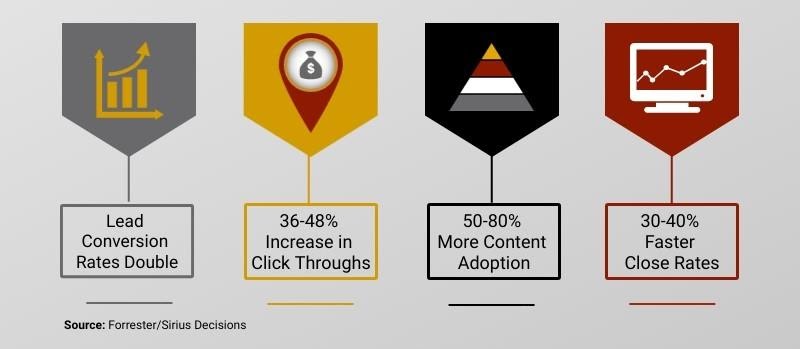Do the best marketing strategies come from market research or buyer persona research?
It’s not a trick question—these are completely different approaches, although many marketers get them confused.
When looking for fresh insights about their buyers, companies will often send out surveys, submit questions to focus groups, and dig through industry reports to fill in the blanks.
These methodologies are guaranteed to accomplish one thing—you will get answers to questions you think are important. You will not learn anything about what your buyers think is important.
Once you understand the pitfalls of traditional approaches to buyer research, you can start capturing real insights through actual conversations with buyers. You need a new way to listen before you can understand what your buyers really care about and why they begin to look for your solution in the first place.
The Problem with Marketing Surveys
Survey tools like Survey Monkey are appealing to marketers for gathering quantitative research because they’re practically free and they’re simple to use. It’s almost like sending out an email campaign.
Surveys conducted over the phone have a similar format. In both cases, the person who is responding just wants to get through the survey as quickly as possible.
Survey research doesn’t make room for breakthrough insights. While a survey is a good tool for statistical validation and compiling demographics, it’s not useful for uncovering insights about buying decisions, such as what motivates a buyer to make a purchase or how that buyer compares your solution to other options.
Your buyer persona needs to relate a story about the buying decision, and stories can’t be gathered in a survey. Survey response options are limited, and the questions are tailored to solicit responses that can be analyzed for statistical validation. Even with open-ended questions, you’re constraining the responses to the questions you think are important. This completely eliminates the opportunity to hear your buyers talk about what they want to share.

Why Focus Groups Fail
Questions submitted to a focus group are designed to get people talking and feeding off one another’s responses. The intention, of course, is to build insights by watching the group’s interactions with your ideas and with each other.
A focus group may appear successful if people are engaging with each other and riffing on the idea your moderator suggested. What you’re seeing, however, is the power of group think, where people are influenced by each other rather than reflecting deeply on their personal experiences. In fact, this dynamic often results in a passionate discussion about a trivial or irrelevant topic. By design, focus groups motivate people to reach a consensus or divide into warring factions rather than capturing the depth and emotion of their personal and individual stories.
The focus group will fall short when you want to capture deep insights into your buyer’s experience of a buying decision.
Same with Scripted In-Depth Interviews
The common approach to an in-depth interview begins with a discussion guide that closely resembles a survey.
Your marketing staff sits in a room and thinks about what they want to learn, or a third-party research company may prepare the guide for you. In both scenarios, you’re developing questions that you think are important to ask and then asking people to respond to those questions. The moderator has some ability to go off script with follow-up questions, but the information that’s gathered still originates with your plan for the conversation.
Put on Your Journalist Hat and Listen
All three of these approaches to buyer persona research have your agenda in mind. The questions, in varying degrees, are formulated. The answers are a function of what you want to know. Maybe something new will emerge here and there if you’re lucky, but chances are good you’ll spend a lot of time and money validating your company’s own biases. The key to getting better research results is reframing the methodology.
Imagine that your buyer’s purchase decision is the topic of a magazine article. How would you gather all the information you’d need to write the article? Sure, you might do some research beforehand and compile what details you can about the person you’re interviewing. But what every good journalist really wants is the chance to sit down one-on-one and hear what someone has to say. In the best-case scenario, you won’t know where the interview is going until it’s over, much of what they tell you during the interview will surprise you, and you wouldn’t want to frame the story until you can reflect on their words.
Reimagine your approach to persona research as if you were a journalist. You’ll find real buyers to interview, hang on their every word, and encourage them to tell you more about the parts of their experience that are most important to them. You won’t know until you start listening to which parts of the story were difficult and really factored into their decision. Your only goal is to keep the buyer passionately engaged in telling their own story in their own words.
Personalization Is Key
When your persona makes a buying decision, personalization trumps scalability.
Buying experiences matter—your buyers go through highs and lows throughout the buying process. If you give them what they want at those critical moments, they’ll choose to do business with you. At every step in their journey, your buyers are seeking the information they need to have confidence in their choice. Listening to what appeals to them, what excites them, and what they find challenging will tell you everything you need to know.
If you don’t have the internal resources to reboot your market research approach, an experienced third-party can elicit the insights directly from buyers, probing to bring you their personal stories about a recent buying experience.
It’s time to reshape the idea that companies have a goal to capture specific data about their buyers. Only the customer and those who were part of the buying decision know what’s important to them. And the only way to gain insight into your buyer’s persona is to give them a chance to tell their true story.





